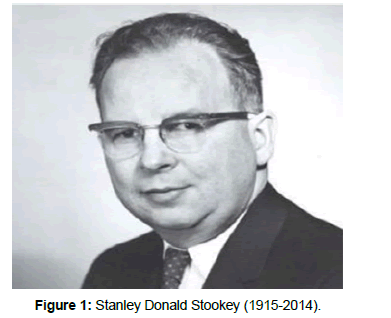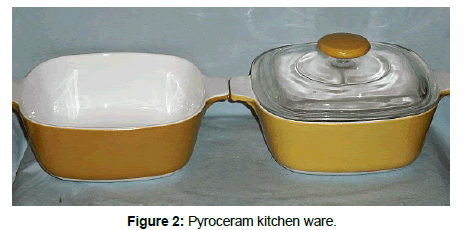Editorial, Res Rep Metals Vol: 1 Issue: 3
Innovation by Mistake
Fathi Habashi*
Department of Mining, Metallurgical, and Materials Engineering, Laval University, Canada
*Corresponding Author : Fathi Habashi
Department of Mining, Metallurgical, and Materials Engineering, Laval University, Quebec City, Canada
Tel: (418) 656-2160
E-mail: Fathi.Habashi@arul.ulaval.ca
Received: August 22, 2017 Accepted: August 23, 2017 Published: August 28, 2017
Citation: Habashi F (2017) Innovation by Mistake. Res Rep Metals 1:3
Abstract
Photosensitive glass belongs to the lithium-silicate family of glasses, in which an image can be captured by microscopic metallic particles of gold or silver in the glass when it is exposed to ultraviolet light. When the glass is heated to temperatures in the range 550- 560°C for several hours the latent image is converted to a visible image through photo-excitation. Exposure through photographic negatives permits the development of three-dimensional color images and photographs. It was discovered by Donald Stookey (Figure 1) in 1937 of the Corning Glass Works in Corning, New York and named “FotoForm”.
Keywords: FotoForm; Photosensitive glass; Corning Glass; Pyroceram
Introduction
Photosensitive glass belongs to the lithium-silicate family of glasses, in which an image can be captured by microscopic metallic particles of gold or silver in the glass when it is exposed to ultraviolet light. When the glass is heated to temperatures in the range 550- 560°C for several hours the latent image is converted to a visible image through photo-excitation. Exposure through photographic negatives permits the development of three-dimensional color images and photographs. It was discovered by Donald Stookey (Figure 1) in 1937 of the Corning Glass Works in Corning, New York and named “FotoForm”
One day in 1952, Stookey placed a piece of FotoForm glass in the furnace with the intent of heating it to 600°C then walked away. When he returned few hours later he realized that the temperature indicated by the oven thermometer was 900°C. Worried that he may have damaged the furnace, he immediately attempted to remove the piece of glass. When he opened the door of the furnace, he saw the glass was intact and had turned opaque and became milky white. He took tongs to rapidly remove the piece of glass from the furnace but unfortunately, the hot piece of glass slipped out of the tongs and fell on the floor with a ringing sound. However, instead of shattering into pieces as expected it did not! It was a great event for a piece of glass.
Stookey followed up this lucky accident with years of research. Ultimately, he confirmed that what happened to the piece of lithium silicate glass. The glass has partly crystallized thus became a ceramic material. It was amazingly strong and durable, had a low thermal expansion. In 1957 it was named "Pyroceram", being a ceramic made from glass that could withstand temperatures up to 1,300°C. The new material made its way into kitchens across the United States and later into the world (Figure 2).
Glass ceramic materials share many properties with both glasses and ceramics. They have an amorphous phase and one or more crystalline phases. Glass ceramics have the fabrication advantage of glass, as well as special properties of ceramics.
Glass ceramics are different from porcelain which is a paste of high quality clay like kaolin fired at high temperature - - kaolinite is dehydroxylated, i.e., it loses its combined water and is transformed into meta-kaolin. It cannot be heated because it breaks immediately.
Glass ceramics are also different from Pyrex discovered in 1908 at Corning. Pyrex is transparent glass containing boron that can be also heated in a furnace or a flame because it has low coefficient of thermal expansion but it breaks when it falls on a hard surface [1,2].
It was discovered later that glass ceramics was invisible to radar and harder than carbon steel. This led to its use in guided missiles. Stookey developed the photosensitive glass that helped lead to colour television picture tubes. He also developed glass used in eyeglasses that darken in response to light. This story recalls the lab technician who was told never to use a mercury thermometer to agitate the solution while measuring the temperature. Yet, while he was doing just that the thermometer broke. It was found that mercury acted as catalyst and accelerated the reaction!
 Spanish
Spanish  Chinese
Chinese  Russian
Russian  German
German  French
French  Japanese
Japanese  Portuguese
Portuguese  Hindi
Hindi 

